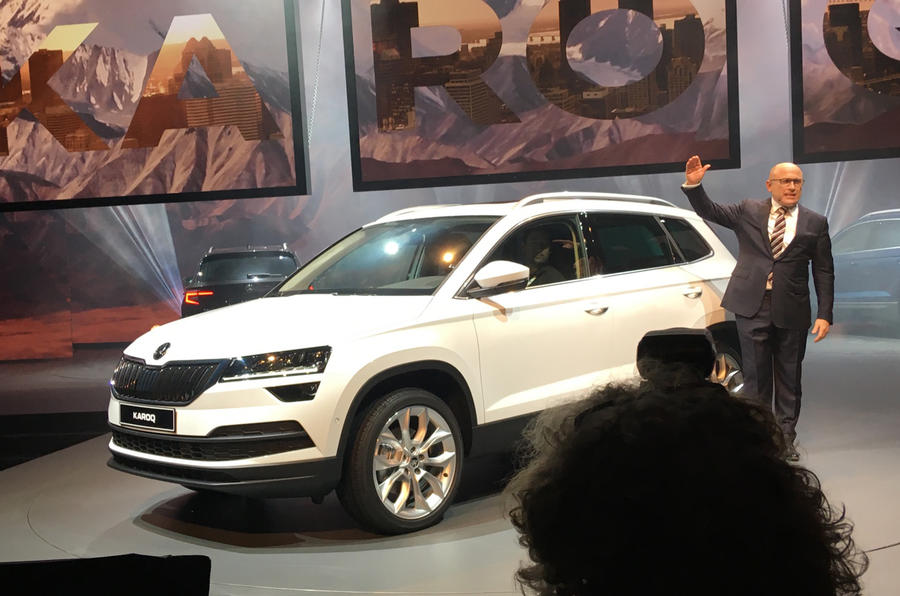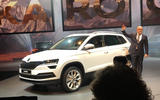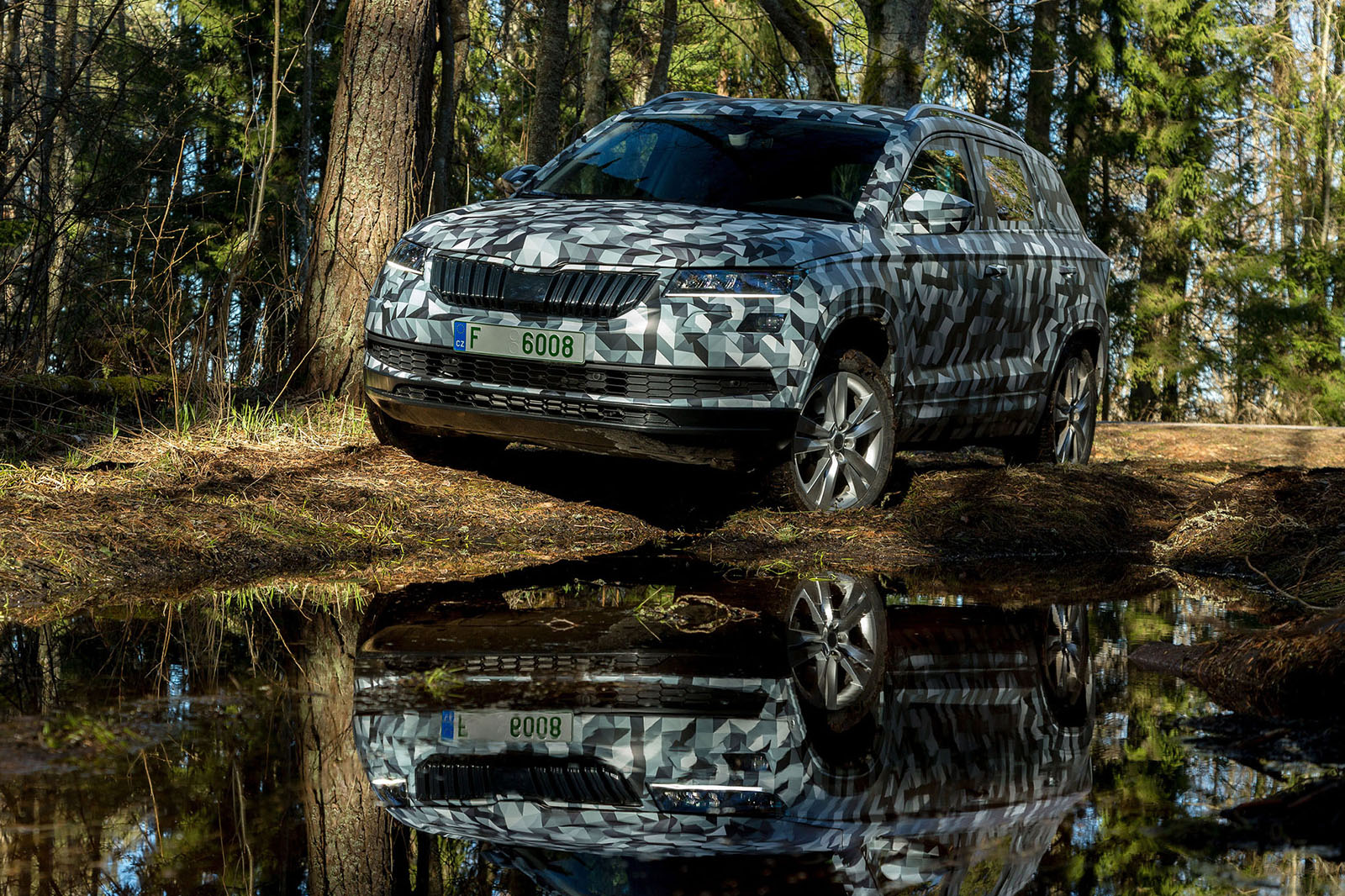The Skoda Skoda Karoq has been with an all-new exterior design, advanced driver assistance technology and four new turbocharged engines.
Ditching the unique exterior shape of its predecessor, the Skoda Yeti (2013-2017), for a more conventional SUV body, the Karoq shares many features with the larger Skoda Kodiaq, which it sits below in Skoda’s line-up.
Skoda is marketing the Karoq as a small yet practical family SUV, to set it apart from the sportier Seat Ateca and pricier Volkswagen Tiguan, with which it shares parts. “All passengers have equal rights," said Karl Neuhold, the car's exterior design chief.
The Karoq has space for five passengers and has a boot capacity of 521 litres or 1630 litres with the back seats folded down. This comfortably beats the car’s main rival, the Nissan Qashqai, which offers 430 and 1585 litres respectively.

Built on the Volkswagen Group’s MQB platform, the Karoq comes with a choice of five turbocharged engines, four of which are new to Skoda.
The new petrol engines are an entry-level 1.0-litre TSI three-cylinder with 113bhp and 129lb ft and a 1.5-litre TSI with 148bhp and 184lb ft, with the latter enabling an 8.4sec 0-62mph time and featuring active cylinder technology.
There’s a new diesel 1.6-litre TDI that produces 113bhp and 184lb ft while emitting just 118g/km of CO2, and a new 2.0-litre TDI that outputs 187bhp and 295lb ft, enabling a 7.8sec 0-62mph time – the quickest available.

These new Skoda units are joined by a 2.0-litre TDI that’s familiar to the brand, which produces 148bhp and is the most fuel-efficient engine, offering 64.2mpg combined and outputting 115g/km CO2.
The Karoq comes in two and four-wheel drive guises and with a choice of a six-speed manual of seven-speed DSG automatic gearbox. In higher-spec it comes with Skoda’s Drive Mode Select system, which enables the car’s drivetrain to be switched through Normal, Sport, Eco, Individual and Snow.
A hot vRS version looks on course to join the range at a later stage, possibly making use of Skoda's 217bhp turbocharged 2.0-litre engine that's used in the Skoda Octavia vRS. Leetz hinted at the model's arrival. He said “It is imaginable. Just take our smile as an answer”.
Driver assist systems include a radar-based adaptive cruise control, blind spot detect and front assist, which includes automatic city braking with a pedestrian braking system.









































































Join the debate
Add your comment
So no useful side by side comparison with Ateca
ooooh so excited, peeing my
"we'll see it for the first
Oh, puhleese..... stop exaggerating.
It's basically a Seat Ateca with a Skoda badge.
Many of the journos around here forever hark back to the days of BL badge engineering saying how terrible it was, how it diluted choice etc etc. Yet VAG start doing it and anyone would think this is the most important car launch of the year.
I can safely say having had a Yeti for the last 3 years, I won't be ordering this as its replacement It's got none of the good points of the Yeti - neat, distinctive styling, sensible foot print - and probably all the bad points - VAG emission cheat diesel engines, dull standard VAG issue interior etc.